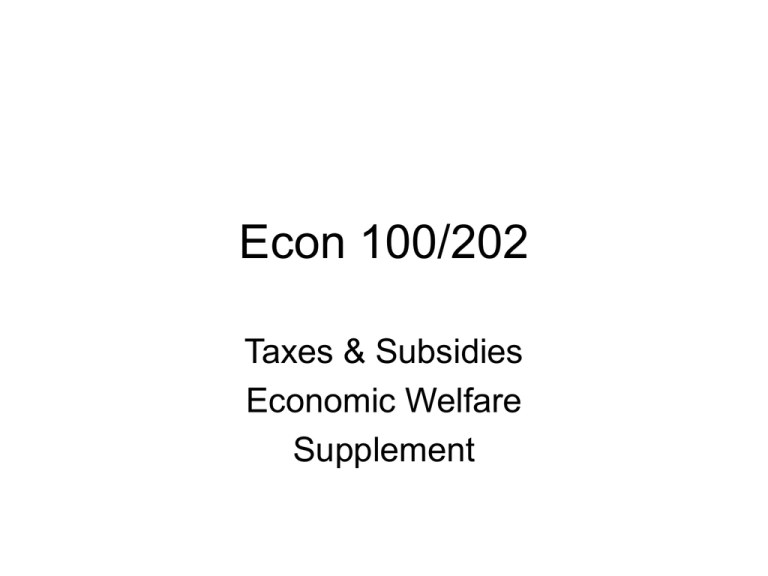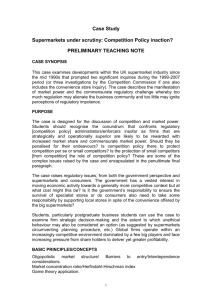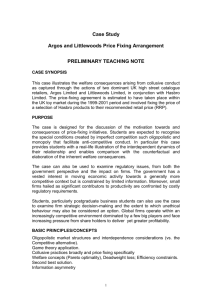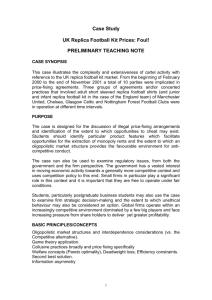Econ 100/202 Taxes & Subsidies Economic Welfare Supplement
advertisement

Econ 100/202
Taxes & Subsidies
Economic Welfare
Supplement
How Do We Analyze the Effects of
Taxes and Subsidies
• The efficient ideal market
– “perfectly competitive” market
• Consumers and suppliers are price-takers, i.e. have no
market power
Total Social Welfare
•
Ideally the impact of a program should be
evaluated as: {Pareto efficient}
–
–
–
•
1) can at least one person’s welfare be improved
2) without making anyone worse off
http://en.wikipedia.org/wiki/Pareto_efficiency
More realistically: Could the winners
compensate the losers? {Pigouvian}
–
–
Is the deadweight loss of the taxed good less than
the surplus gain from the subsidized good?
http://en.wikipedia.org/wiki/Pigovian_tax
Deadweight Loss
Price Consumers
Pay
Pre-tax price
Price Sellers
Receive
Reduction in
Qty sold
Deadweight Loss
Retained CS
Tax Rev
From CS
Tax Rev
From CS
Retained PS
How Do We Evaluate
the Impact of the Tax?
• Two Parts:
– Tax Incidence
• Who pays for it more?
– Consumers or Producers?
– Will depend on relative demand/supply elasticities
– Economic welfare analysis
• Does the tax (revenue) improve social welfare?
– Will depend on relative elasticities of:
» a) good taxed
» B) good or program financed by the tax
What Are the Benefits?
• Depends on what we do with the taxes
– Suppose we use it to subsidize another good
• Subsidy appears as a reduction in per-unit costs to
the firm getting the subsidy
Figure A-1.
The Deadweight Loss from a Price Subsidy
SOURCE: Congressional Budget Office.
Evaluating The Impact
• Costs:
– Deadweight loss: sum of reduction in consumer and
producer surplus for the taxed good
• Reflects reduction in Qd and higher price paid
• Benefits
– Gain in CS and PS from subsidized cost
• Will Benefits > Tax
– Depends on the relative demand elasticities for the 2
goods
Evaluating the Impact
• “A Positive Analysis” (Distributional
Consequences)
– Who gains/loses from the tax and subsidy?
– Both producers and consumers of the taxed
good lose (in terms of lost surpluses)
– Relative demand/elasticities determine who loses most
» More inelastic demand -> greater is CS loss
– Producers and Consumers of subsidized
good win (lower price and more Q)
– Relative demand supply elasticities determine who
benefits most
Total Social Welfare
•
Ideally the impact of a program should be
evaluated as: {Pareto efficient}
–
–
–
•
1) can any one (or more) person’s welfare be
improved
2) without any one else’s welfare being reduced
http://en.wikipedia.org/wiki/Pareto_efficiency
More realistically: Could the winners
compensate the losers? {Pigouvian}
–
–
Is the deadweight loss of the taxed good less than
the surplus gain from the subsidized good?
http://en.wikipedia.org/wiki/Pigovian_tax



